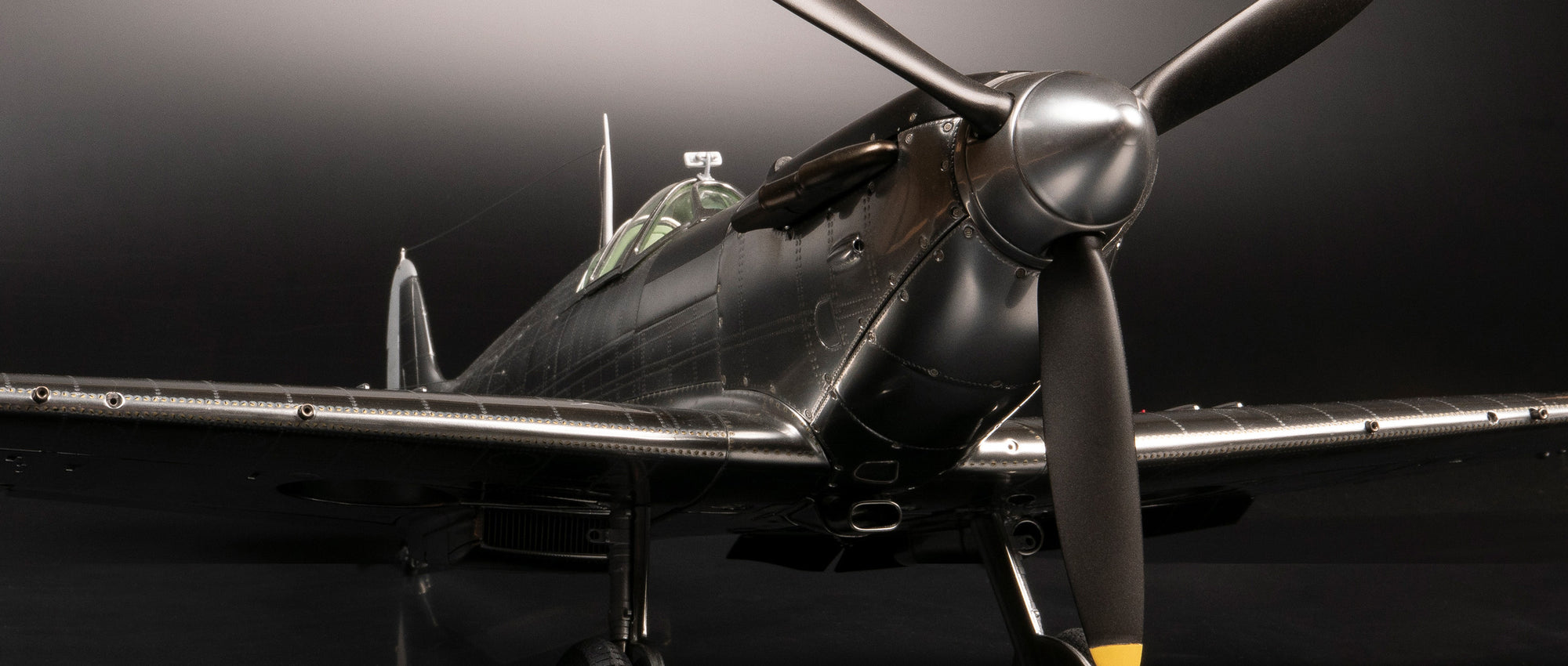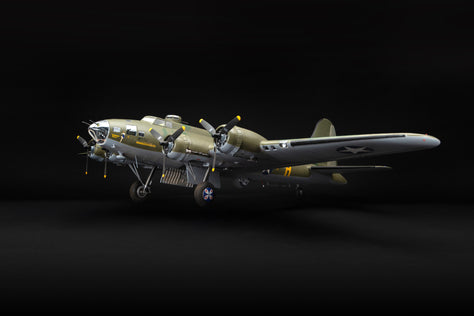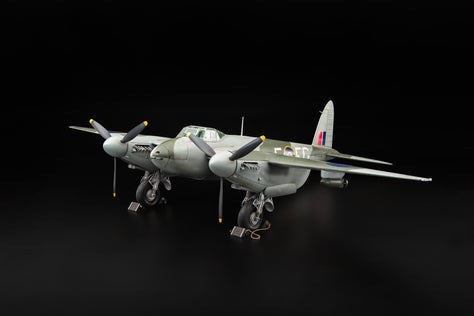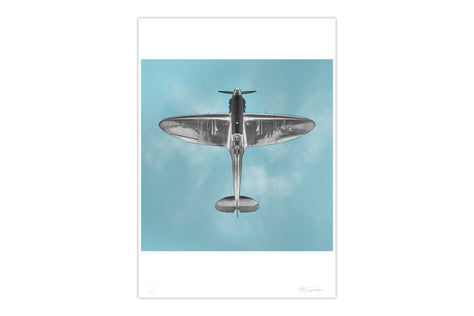Technical Details
- Description
- Scale guide
A beacon of defiance in its darkest hour, the Supermarine Spitfire is Britain’s most famous World War II fighter. The brainchild of Reginald Mitchell of Supermarine Ltd., the Spitfire was developed in response to a 1934 Air Ministry specification calling for a high-performance fighter with an armament of eight wing-mounted 0.303inch (7.7mm) machine guns. The aeroplane was a direct descendant of a series of racing floatplanes designed by Mitchell to compete for the coveted Schneider Trophy in the 1920s. One of these racers, the S.6, set a world speed record of 357mph (574km/h) in 1929. Mitchell created a more radical design for the Spitfire than the steel, wood and cloth-derived Hawker Hurricane, the favourite of many a RAF Commander for the 1930s. It featured a stressed-skin aluminium structure built around a 1,000hp, 12-cylinder, liquid-cooled Rolls-Royce PV-12 engine (later known as the Merlin). The design featured a graceful elliptical wing with a thin airfoil that, in combination with the Merlin’s efficient two-stage supercharger, gave it exceptional performance at high altitudes. Due to the aluminium body, the Spitfire was not only tougher to build, but harder to repair, prompting concerns that it may be too advanced to be practical. The wing-mounted guns were all oriented to fire at a centre point in front of the aircraft. To aid with targeting, Spitfires were also equipped with an electric sight that pilots could turn on and off. Once activated, an orange dot would appear on the windscreen in front of the pilot’s field of view in an extremely early precursor to the digital heads-up displays (HUDs).
The Spitfire first flew in March 1935 and entered service with the British Royal Air Force in July 1938, with the first operational aircraft arriving at 19th Squadron’s Duxford airfield on August 4th. Sadly, Mitchell never saw his creation reach service, passing away from cancer in June 1937. Even after learning that he was terminally ill, Mitchell continued to pour himself into the effort, against the advice of his doctors and family.
In the early months of the war, Spitfires were largely kept out of the fighting, though they were involved during the evacuation of Dunkirk, as the Ministry of Defence favoured the use of Hurricanes squadrons. The first kills by a Spitfire occurred on 16th October, as fighters from Nos 602 and 603 Squadrons shot down two German Junkers Ju 88s in the Firth of Forth. In the summer of 1940, the German offensive began. Many within England and her allies (including prominent figures in France and the USA) saw war with Germany as a losing enterprise after the rapid Nazi advance through Belgium and the Netherlands, and British pilots were not only contending with more advanced opponents, even with the Spitfire, they were also squaring off against vastly superior numbers. RAF estimates at the time made it clear that the Spitfire was, by every metric, the underdog.
Spitfires were sent by preference to engage German fighters while the slower Hurricanes went for the bombers. More Hurricanes than Spitfires served in the Battle of Britain, and they were credited with more “kills,” but it can be argued that the Spitfire’s superior high-altitude performance provided the margin of victory. Throughout the Battle of Britain, the Luftwaffe sent an average of 1,000 aircraft into British airspace a day, striking at London with more than 1,100 in one massive wave, but just as they had each time before, the RAF beat them back, with Spitfires leading the way.
Mk 1s Spitfire were not solely used by the British, but were also delivered to Portugal, Turkey and France. In all, 1533 Mk1 Spitfires were built by Supermarine, with an additional 50 by Westland Aircraft. All Mk 1s were declared obsolete by February 1945.
This fine Amalgam scale model is a faithful 1:16 scale reproduction of the Mk 1a aircraft flown by Geoffrey Wellum of 92 Squadron in September 1940, and is undoubtedly the most accurate and highly detailed model of the Spitfire ever produced. Every minute detail of the aircraft has been reproduced including the thousands of rivets, every tiny detail of the cockpit and the top end of the Rolls Royce Merlin Engine. Like all Amalgam’s work, this model is the result of a powerful combination of art and technology, using original digital scanning combined with high sculpting and finishing skills to create a model indistinguishable from the real aircraft in photographs. It has been developed using extremely accurate digital scan data gathered from aircraft in the Battle of Britain Memorial Flight based at Coningsby in Lincolnshire and is offered in a ‘bare metal’ finish to reveal every detail of the refined engineering of this most beautiful aircraft. Every Spitfire is built to order, so please contact our friendly sales team to discuss any bespoke requirements.
The Mk 1a Spitfire is limited to just 50 pieces.
Please note that, due to the large size of this piece and complexities of shipping, additional costs will be calculated and billed separately based on delivery location.
--------------------------------------------------------------
This precise replica is one of several in the Amalgam Aircraft Collection.
Discover the full Aircraft Collection >
Our very exclusive Unique Commissions service is available to clients who will relish working with us to create one-offs.
Pre-order
Bespoke
In order for us to create your bespoke model, you will need to choose 4 extra options. Paint colour, interior colour, wheel style and caliper colour.
Please complete the form and a member of our Sales Team will contact you.
Contact Us
Please contact us for more information about ordering this model.







